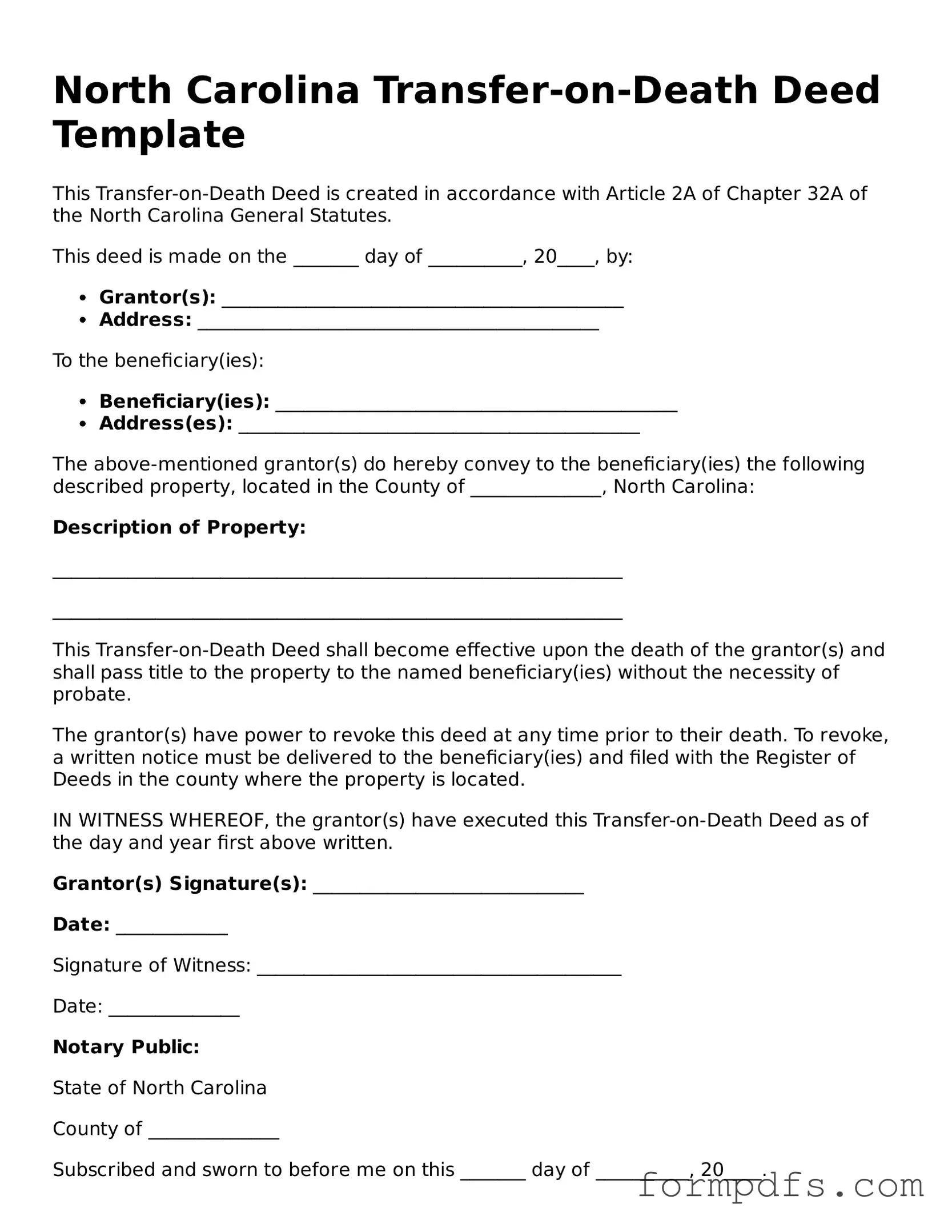What is a Transfer-on-Death Deed in North Carolina?
A Transfer-on-Death Deed (TOD Deed) is a legal document that allows a property owner to transfer their real estate to a designated beneficiary upon their death. This type of deed bypasses the probate process, making the transfer of property simpler and more efficient for the beneficiaries. It is important to note that the property owner retains full control over the property during their lifetime, including the right to sell or mortgage it without the beneficiary's consent.
Who can use a Transfer-on-Death Deed?
Any individual who owns real estate in North Carolina can utilize a Transfer-on-Death Deed. This includes homeowners, landowners, and individuals who hold title to property. However, it is crucial that the property is not subject to any liens or claims that could complicate the transfer process.
How do I complete a Transfer-on-Death Deed?
To complete a Transfer-on-Death Deed, the property owner must fill out the form with accurate information. This includes the legal description of the property, the names of the beneficiaries, and the property owner's signature. It is advisable to have the document notarized to ensure its validity. After completing the form, it should be filed with the county register of deeds where the property is located.
Is there a deadline for filing a Transfer-on-Death Deed?
Yes, a Transfer-on-Death Deed must be filed before the property owner's death for it to be effective. If the deed is not recorded prior to the owner's passing, the property will not transfer automatically to the designated beneficiaries and may instead be subject to probate.
Can I revoke a Transfer-on-Death Deed?
Absolutely. A property owner can revoke a Transfer-on-Death Deed at any time before their death. This can be done by executing a new deed that explicitly states the revocation or by recording a formal revocation document with the county register of deeds. It is essential to ensure that the revocation is properly documented to avoid any confusion later on.
What happens if I do not name a beneficiary in the Transfer-on-Death Deed?
If a property owner fails to name a beneficiary in the Transfer-on-Death Deed, the property will not transfer automatically upon the owner's death. Instead, it will be treated as part of the deceased's estate and will be subject to probate. This can lead to additional costs and delays for the heirs.
Are there any tax implications associated with a Transfer-on-Death Deed?
Generally, there are no immediate tax implications when executing a Transfer-on-Death Deed. The property remains part of the owner's estate until their death. However, beneficiaries may be responsible for property taxes once the property is transferred. It is advisable to consult with a tax professional to understand any potential tax consequences fully.
Can a Transfer-on-Death Deed be contested?
While a Transfer-on-Death Deed is designed to simplify the transfer of property, it can still be contested under certain circumstances. If there are claims of undue influence, lack of capacity, or if the deed was not executed properly, a challenge may arise. It is crucial to ensure that the deed is completed correctly and that the property owner is of sound mind when executing the document.
Where can I find a Transfer-on-Death Deed form for North Carolina?
Transfer-on-Death Deed forms can typically be found online through the North Carolina Secretary of State's website or at local county offices. Additionally, many legal service providers offer templates that can be customized to fit individual needs. It is important to ensure that any form used complies with North Carolina laws to avoid issues with validity.
